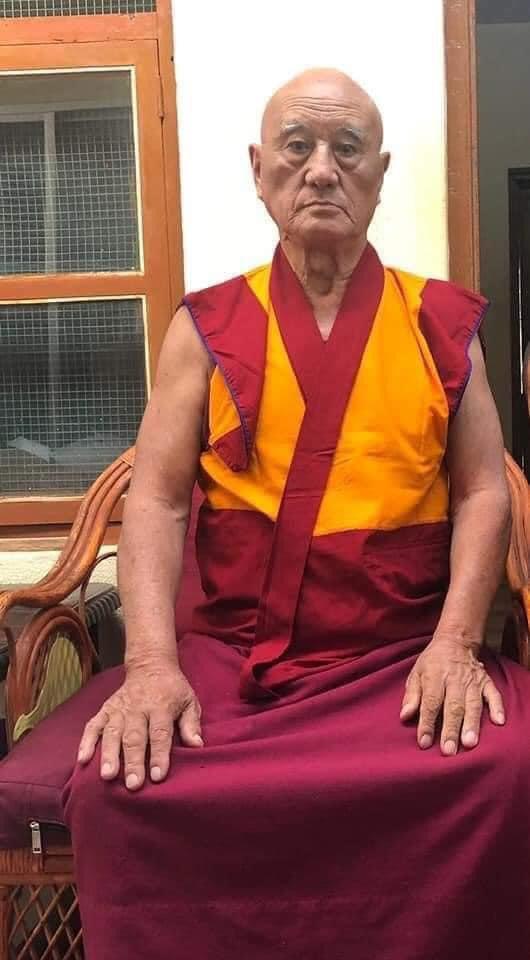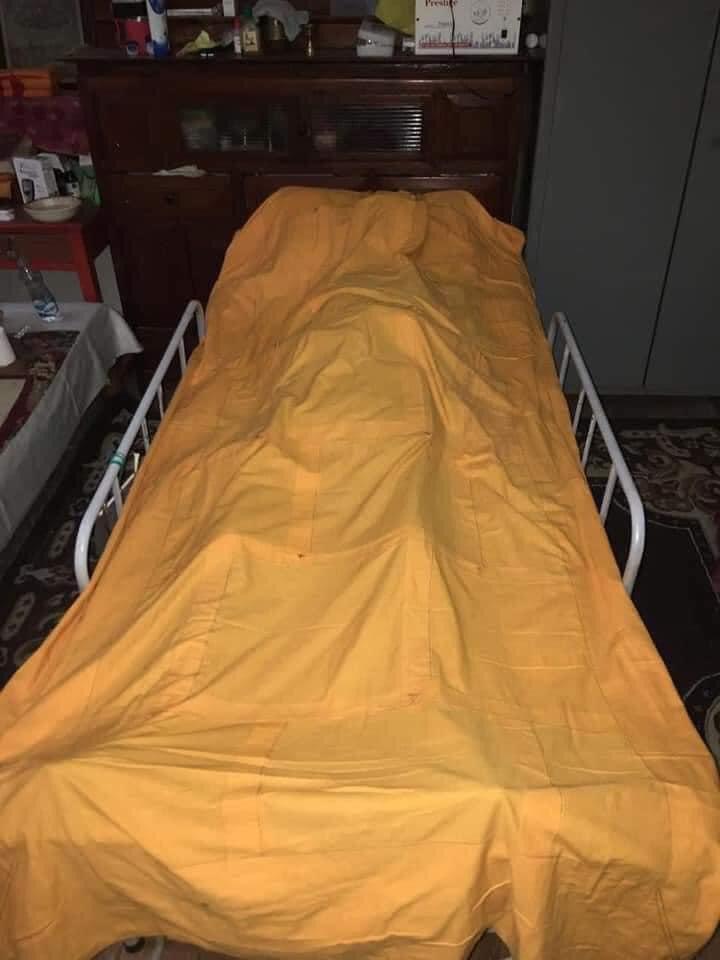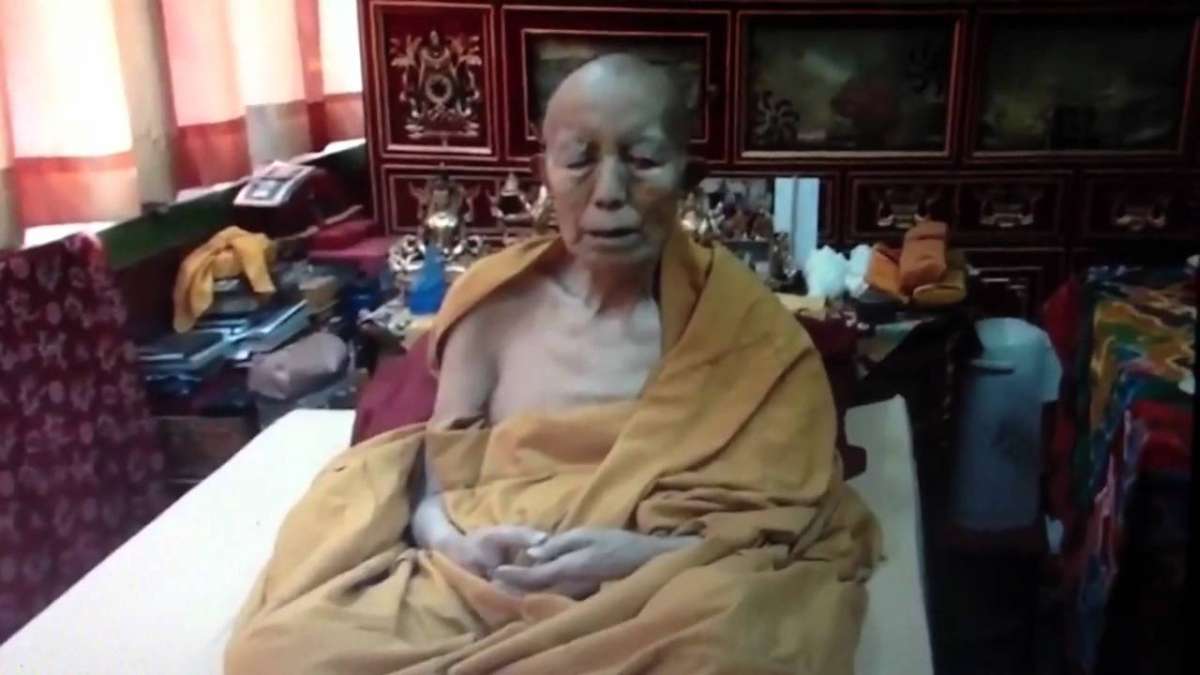
The Central Tibetan Administration (CTA) reports that Geshe Tenpa Gyaltsen, a Buddhist scholar at Gaden Jangtse Monastery in southern India, who was declared dead some 26 days ago, has shown no signs of physical decay or decomposition. It is believed that the monk has entered a rare tantric meditative state known as thukdam (Tib: ཐུགས་དམ་).
The thukdam state, which has been observed in a number of advanced tantric practitioners in recent years, is a meditative condition in which the individual’s consciousness is believed to remain in the body despite and beyond physical death. This is believed to posptpone the usual signs of decay. Tibetan Buddhist literature describes a glow on the face and warmth in the body of the deceased, making them appear to be alive.
The Tibetan term thukdam is a combination of “thuk,” meaning mind, and “dam,” referring to the meditative state of samadhi or concentration. As recently reported, scientific studies of this state are underway. Most recently in August, the Taiwan-based Tibetan Buddhist monk and scholar Geshe Jampa Gyatso entered the state. Thereafter his body was observed by scientists from Academia Sinica, the pre-eminent academic research institution in Taiwan.

Buddhist scholar Dr. Evan Thompson recounts several other instances of thukdam in his book Waking, Dreaming, Being: Self and Consciousness in Neuroscience, Meditation, and Philosophy (Columbia University Press 2017):
Another case is Lama Putse, of Ka-Nying Shedrub Ling Monastery near Boudhanath on the outskirts of Kathmandu, Nepal. He died March 31, 1998, and is reported to have remained in thukdam for eleven days, until April 11, 1998. On April 8 and 9, senior physicians from the CIWEC clinic in Kathmandu examined him and noted the lack of decay.
Chogye Trichen Rinpoche died January 22, 2007, in Kathmandu, and is reported to have remained sitting upright in thukdam for fifteen days, until February 6, 2007.
Kyabje Tenge Rinpoche, of Benchen Monastery in Kathmandu, died March 30, 2012, and is reported to have remained in thukdam for three and a half days, until April 3, 2012. A picture of him sitting upright in the thukdam state was widely circulated on the Internet. (Thompson 295)

After spending time at the University of Wisconsin-Madison’s Center for Investigating Healthy Minds with the meditation researcher Dr. Richard Davidson, Thompson noted:
One intriguing possibility that emerged from this meeting came from exchanges between the experts on Tibetan meditation and scientist Mark Roth, who works on the molecular biology of suspended animation at the Fred Hutchinson Cancer Research Center in Seattle. The Tibetan meditation specialists described certain deep meditative states in which the body seems to enter a kind of stasis with no observable breathing. Roth wondered whether these practices are able to reduce oxygen demand and slow or even stop metabolic activity. He speculated that, given lifetime practice of such techniques, meditators who practice them at death might be able to alter the usual physiological course of dying and death by affecting the body’s metabolic rate. (Thompson 289)
Geshe Tenpa Gyaltsen was born on 23 April 1934 in Tibet. He joined Gaden Jangtse Monastery in Tibet at the age of 20, and in 1959 he fled to India along with tens of thousands of others. Geshe Dhargyal initially settled at Buxar Choegar (Dharma Center), the first monastic facility established for Tibetans in 1959. He later moved to southern India, where he studied Buddhist philosophy and practiced widely, developing a wide understanding of the major canons of Tibetan Buddhism.
References
Thompson, Evan. 2017. Waking, Dreaming, Being: Self and Consciousness in Neuroscience, Meditation, and Philosophy. Columbia University Press: New York.
See more
‘Clinically dead’ Tibetan monk isn’t showing signs of decay (The Tribune)
Tibetan Buddhist scholar in rare meditative state of Thukdam after 20 days of clinical death (Central Tibetan Administration)














